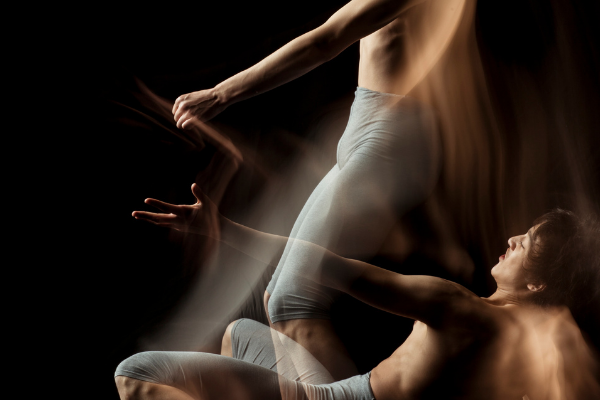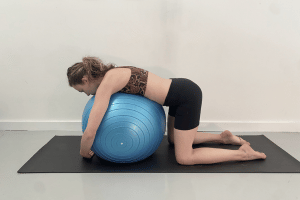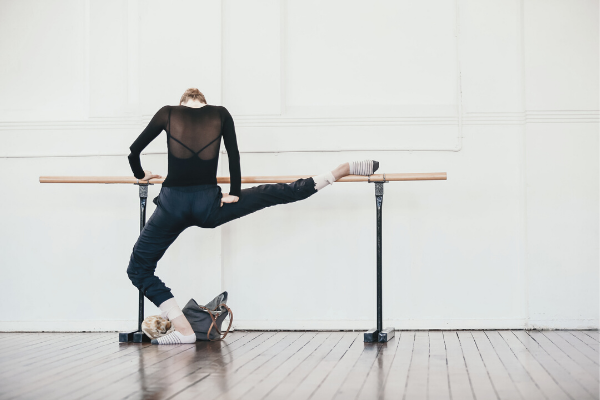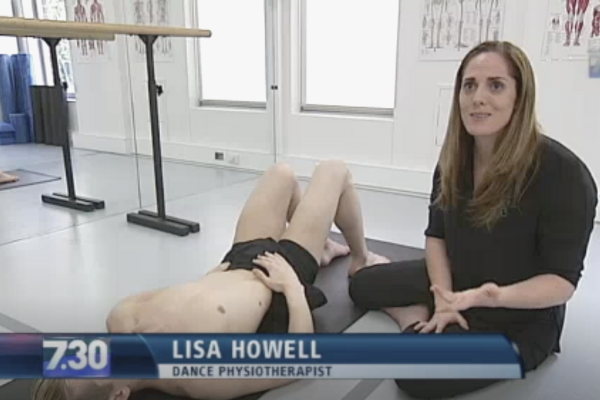- Free Articles
- Shop
- Workshops
- The Dance Educator Series
- Upcoming Workshops
- Workshop FAQ’s
- Host Application Form
- Student Workshop Application Form
- Dance Teacher & Health Professional Directory
- Workshop Testimonials
- Members Areas
- Cart
- My Account
The Truth About Core Stability
Core stability is essential to all dancers to improving turns, control your arabesque and preventing many other injuries. Yet, while we all know that we need it, and most dancers will already be doing lots of training for it, are you really doing what you need to do to get the most out of your core stability training?
Dancers of all ages and levels of training experience pain or discomfort in their hips and backs, and most of this stems from a lack of true deep core control. When asked to demonstrate what 'core stability' exercises they are doing, most of the time they are ineffective for what actually needs to be worked on, and in some cases the exercises are in fact a contributing factor to the injury! Core stability is NOT about doing hundreds of sit ups, getting a ‘six-pack’ or being able to hold a plank position for 3 minutes.
What is true Core Stability…?
- The ability to control the spine dynamically, with movement
- Fine co-ordination of all the muscles that control your trunk, not just the abdominals.
- The ability to adjust the level of control needed, depending on the situation.
- Subconscious, responsive stability, allowing effective transfer of force through the body.
While everyone needs some level of core stability, some people need more than others. For a dancer, core stability needs to be fantastic fine coordination of all of the muscles to allow controlled mobility of the pelvis and spine through space, rather than bracing in one spot, and this should happen subconsciously in most situations.

So How Do We Train That?
First, we need an understanding of the anatomy of the spine.
- Bony Anatomy: The bones of your back are held together by some very deep ligaments and a special arrangement of joints and discs that allow different levels of mobility in different areas of the spine.
- Ligaments: Some people have more ‘give’ in their ligaments than others, meaning they have even more mobility, and more of a demand for true core stability.
- Inner Unit & Deep Fascia: Next up there is a series of very deep muscles that help support the position of the spine. These are called postural muscles and are designed to be on a little bit, most of the time. Your deep back muscles, deep abdominals, pelvic floor and diaphragm all lead into the deep fascia that attaches into the spine and can help to stabilise it.
- Outer Unit: The outer muscle layers, the ones that you see, are more designed for movement than stability, and work powerfully for a short period of time. They have to be trained quite differently to the deep muscles, as they are actually made up from a different muscle fibre type. These include your big back muscles, outer abdominals and gluteals
So our true core training starts off with very tiny activation exercises for the deepest back muscles, deep abdominals and pelvic floor. We then need to move on to exercises that challenge the stability of the spine with movement, but still just using the deepest possible muscles, such as the 4 point sit back exercise, which is demostrated in this video.
Next up comes exercises with movement, to challenge the stability of the spine while it s rotating, extending or side bending. These exercises do wonders for your extensions and your turns as they help you learn how to stabilize the spine in all kinds of odd, dynamic positions!
In the advanced levels of core stability training we also bring in an unstable base, including lots of Ball Exercises for an extra challenge. The ball is a wonderful piece of equipment and is definitely underrated in dance circles!
True Core Stability Exercises are extremely hard to do properly and very easy to do wrong. Simply bracing the abdominals to immobilize the spine is not what we are here to learn.
To discover lots of different core exercises that can really help your dancing, please check out our A New Approach to Core Stability program,that is organised into three stages to take you from beginners to advanced. The Ball Conditioning for Dancers program is also a great resource for more experienced dancers.
The purpose of these courses is to teach you the finer details required to gain true core stability; to help you understand the reasons why it is so important; and a progressive system of exercises to train your muscles in the best way possible.
Core stability is essential to the dancer in improving turns, controlling an arabesque and preventing many back pain issues. It is an area that is the base of almost all dancing movement and you will find as we move through the course it is an area that is very easy to work on both in class and in day-to-day movements. We can't wait to see your results with this approach to core stability.
Core Resources
If you are looking to delve deeper into this topic, check out the following programs:
- A New Approach to Core Stability: This program approaches Core Stability training in a completely new way. Using a simple visual chart comprising of 5 different positions (Lying, Side Lying, 4 Point, Sitting and Standing) and 5 different grades, you can work your way through the entire program at your own pace, layering levels of stability to achieve ultimate dynamic control of the spine and pelvis.
- Level One Dance Teacher and Therapist Training: This unique course covers a multitude of assessment and treatment techniques to individualise a dancer's training. With special focuses on Postural Control, Core Stability, Flexibility, Basic Classical Technique, The Dancers Hip, Allegro, Spinal Mobility and Arabesques, it is suitable for anyone working closely with dancers.







